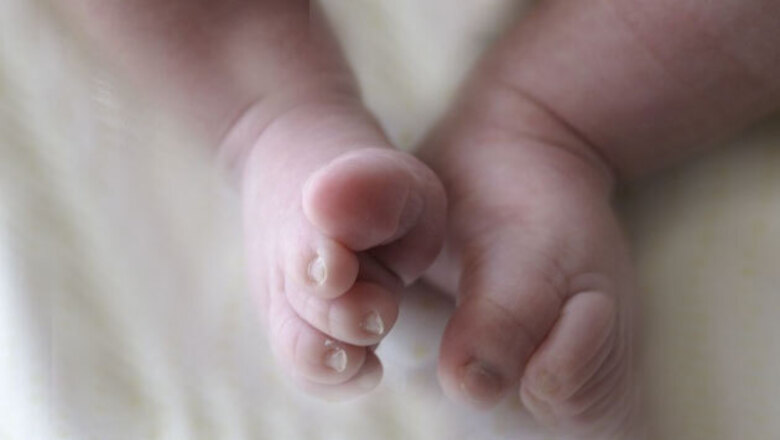
views
India accounts for 3,09,000 baby deaths every year on the first day of their birth, 29 per cent of such deaths around the world. What are the factors responsible for this and how can it be fixed? Save the Children's advocacy director Nirupama Sarma joined IBNLive readers for an interaction on the issue.
Q. What are the factors responsible for this and how can it be fixed? Asked by: yamini
A. The fact that India alone accounts for 29 percent of the world's newborn deaths is a big challenge but at the same time an opportunity to change things too. Many challenges remain including overlapping government structures, lack of accountability of service providers, inequities in service delivery, health worker shortages and capacities, rapid urbanization and policies that currently prohibit the use of some of the most effective interventions to save babies, such as chlorhexidine, Kangaroo Mother Care and antenatal steroids.
Q. So much for our primary health facilities? What are the immediate steps to be taken to reduce the impact? Asked by: Narayan
A. In the past year, India has begun a major political movement to systematically take on the complex and large-scale problem of newborn and child mortality in the world's second most populous country. Together with the United States and Ethiopia, India co-hosted a Child Survival Call to Action in Washington in June 2012 (A Promise Renewed). It has since recommitted itself to a national policy goal of ending child mortality in a generation and developed a clear road map for success. India has the technical know-how and models that have shown change is possible. With NRHM, Janani Suraksha Yojna to incentivize institutional delivery and recently Call to Action has demonstrated political commitment and will to deliver on Child survival.
Q. In your view, what steps do we all need to take to change this society to Save the Children, especially baby Girls. Asked by: Sarada Veluri
A. We have examples from within the country demonstrating real breakthrough such as Abhay Bang's Home based new born care that is being propped as global best practice. We need to create more awareness at the community level, address gender/equity issues, train and empower more health workers, increase our GDP spend for this purpose.
Q. Why should India be behind countries like Bangladesh and Pakistan? It's inexplicable to me. Asked by: rajiv mathur
A. Yes, in India we have several states that have done well, such as Kerala and Uttarakhand. Higher levels of literacy combined with increase in empowerment of women have shown the way in India too. We need to ensure that these learnings are carried over to states that are not performing well.
Q. Why India accounts for the highest number of baby deaths in the world on the first day of their birth. Asked by: Jyoti
A. In the context of India, there are other challenges: 1. Cultural practices: In some communities, women give birth in unclean areas of the house; the newborn is placed on the dirt floor immediately after birth, and breastfeeding is discouraged for several days. At some places, the mother and her newborn are often kept in isolation for two weeks or more, for the purpose of fending off evil spirits. This is just one example of cultural practices that are harmful to newborns. 2. Early marriage and childbearing: This is another factor that heightens the risks for both mothers and babies. According to UNICEF's estimates, 34 million women in South Asia aged 20-24 were married or in union before the age of 18. High rates of child marriage are found in India, where 47 percent of girls marry by the age of 18, although rates vary dramatically across income levels, from a low of 16 percent among girls from the wealthiest families to 75 percent among the poorest. In Afghanistan and Nepal, 40 percent of girls are married before the age of 18. 3. Low birth weight: This is the major contributor to newborn deaths in the country. An estimated 28 percent of infants in India are born too small. Most likely these are underestimates as many newborns are not weighed at birth. 4. Stunting: It is estimated that 11 to 13 percent of women are stunted in the country, which puts them at higher risk of complications during delivery and of having small babies. Twenty to 40 percent of women are also excessively thin, which compounds the risk of poor pregnancy outcomes. It is believed that half of the child stunting occurs in the utero underscoring the importance for better nutrition for women and girls. To add to these there is the overarching inequity that disadvantages poor and marginalized children - there is inequity of wealth, inter-state disparities and rural-urban divide
Q. we don't have a clear instruction manual about child birth. There is no clarity on how much weight the mother can gain and so on. I have come across mothers regulating weight to have a small baby and easy delivery. But the govt says you should gain about 10 kgs who has the authentic guidelines? Asked by: Kumaraprasad.K
A. The Integrated Child Development Services (ICDS) program, commonly known as Aanganwadi Centres run by the govt., provides the facility to track weight, malnutrition etc and also referrals. But the unfortunate truth is that either the people are not aware of it or the centre is not fully functional. The solution is a campaign that informs people, specially the poor and marginalised, about critical newborn care and counseling.
Q. what is the point of the high GDP growth if we can't save our children from simple diseases? Asked by: D'Souza, Goa
A. Our research says that malnutrition alone costs is 2-3 percent of the GDP, which means that the economic growth that we talk about does not take into account the massive loss that neglect of child health & nutrition can cost our nation
Q. What precautions should be taken by pregnant women? Asked by: yamini
A. There are several effective and low cost solutions. These includes proper nutrition during pregnancy, adequate rest, medical care and attention with regular check-up. Even after the child is born, both the mother and child require adequate care during the 1000-day window, believes Save the Children. The life-saving six (as we call them) during these 1000 days include breastfeeding, complementary feeding, vitamin A, IFA tablets, zinc and proper hygiene.



















Comments
0 comment